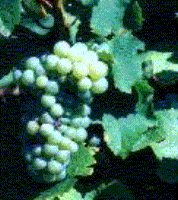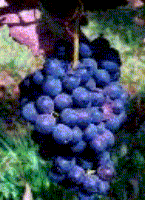
The color of wine comes from the skin
of the grapes. The juice that comes from nearly every variety
of grape when pressed is white or clear. This is true of
red grapes as well as white wines. The color or pigments
of red grapes are found in the skins of the grapes. In order
to make a red wine from red grapes, it is necessary to leave
the skins in contact with the juice during fermentation.
When the skins are placed in the fermenting 'must', the
pigments leech out of the skins and color the wine. When
red grapes are pressed and the skins are kept out, the color
of the wine remains white and is considered a 'blanc de
noirs' (a white wine from red grapes).

White wines do not usually have the skins left in the must
while fermentation takes place. If the wine is being made
from white grapes, there is no benefit to the color and
if the wine is being made from red grapes, the skin contact
would give an undesirable red color to the wine. Rose or
blush wines can be made with 'limited' skin contact (leaving
the skins in the fermenting juice for only a short period
of time) but this method is unreliable in obtaining consistent
tinting from vat to vat.
Rose wines are more often produced by adding a specific
amount of red wine to an already finished white wine.